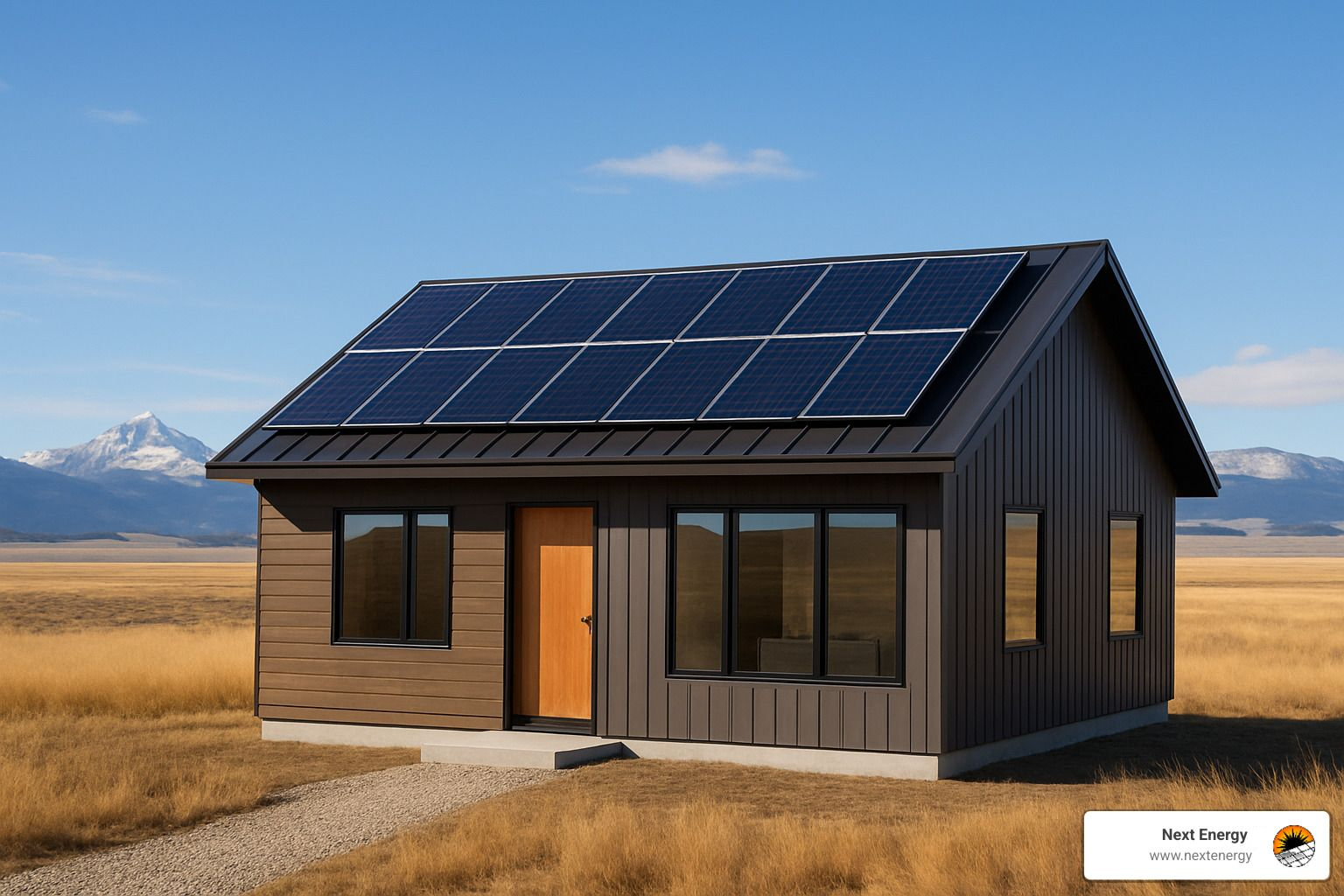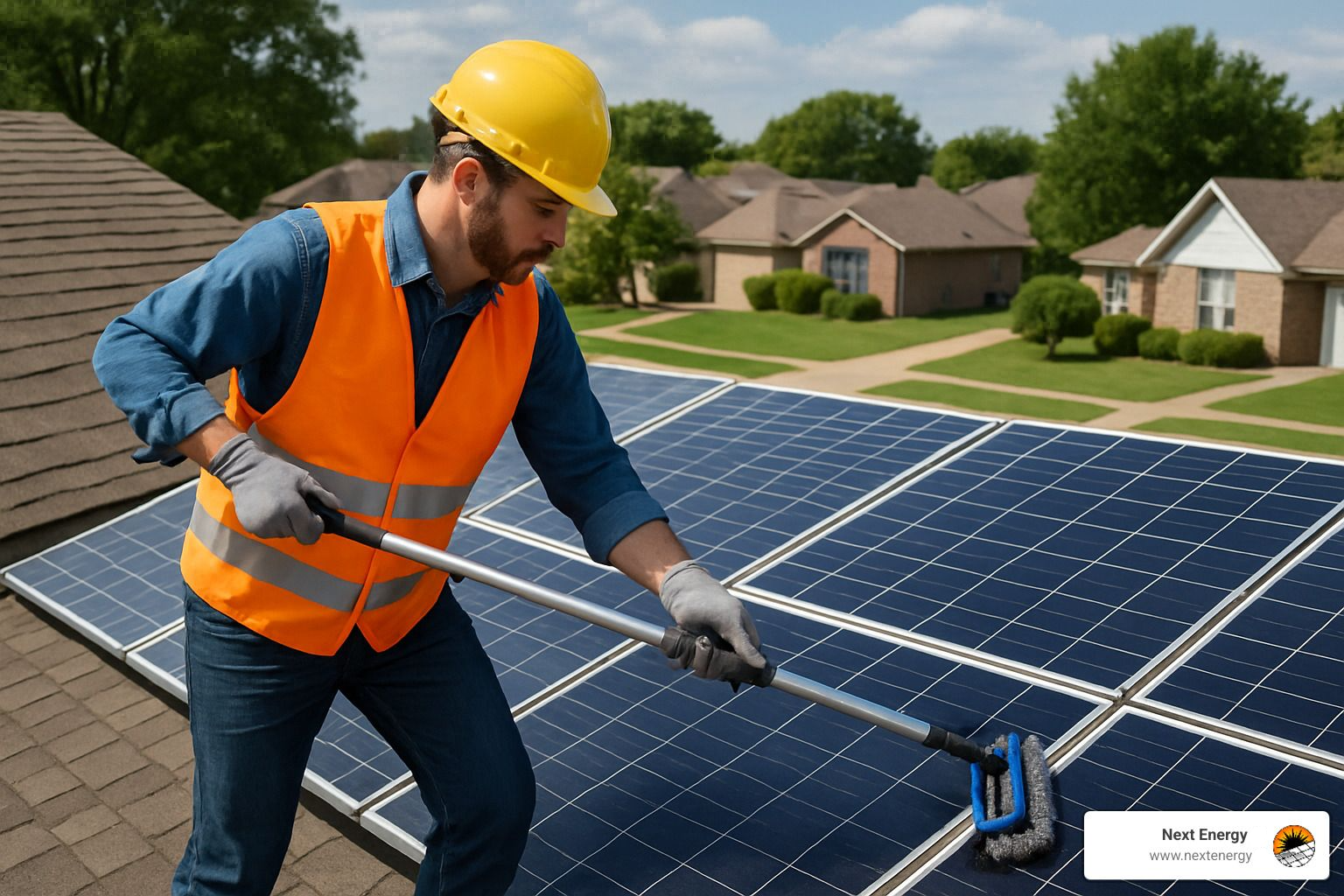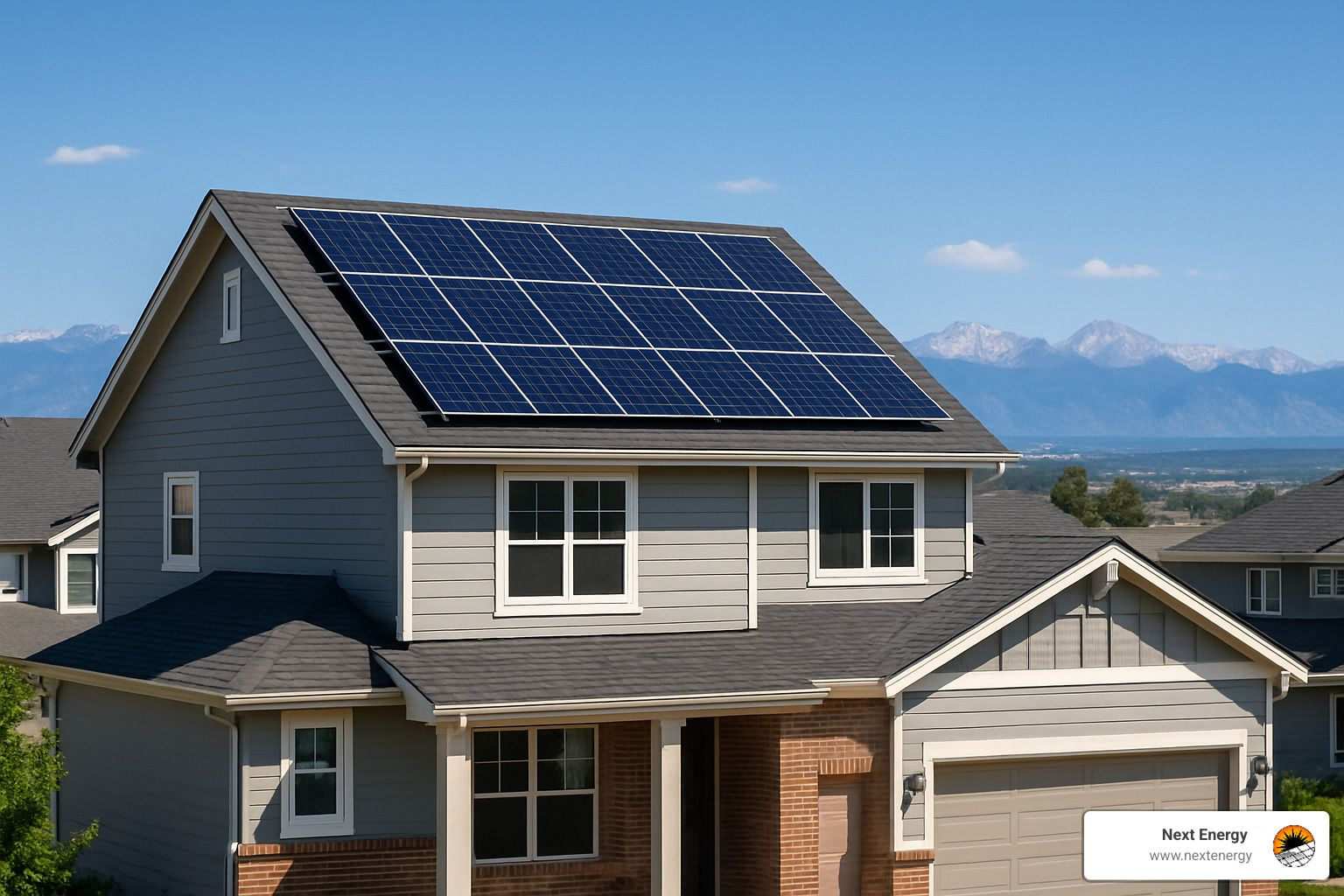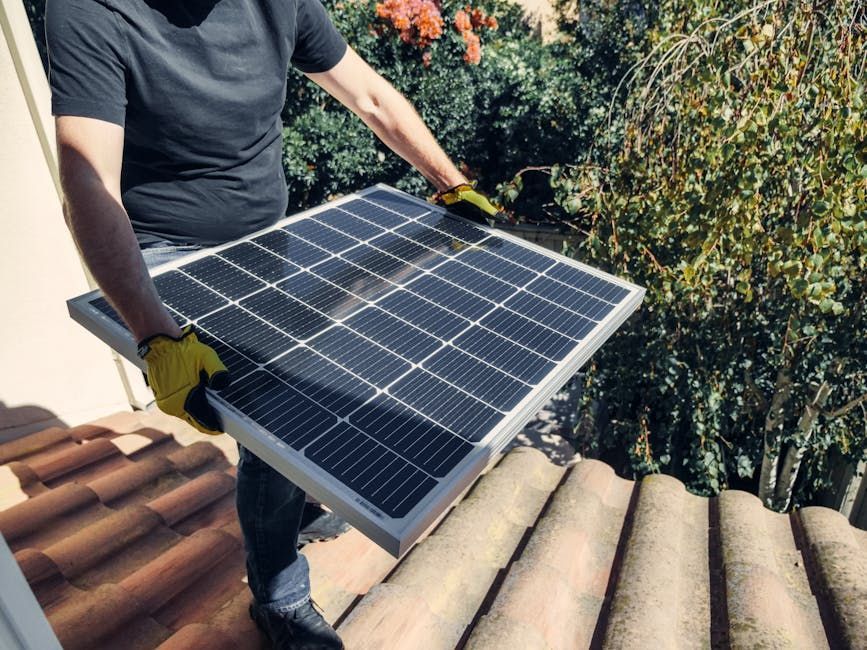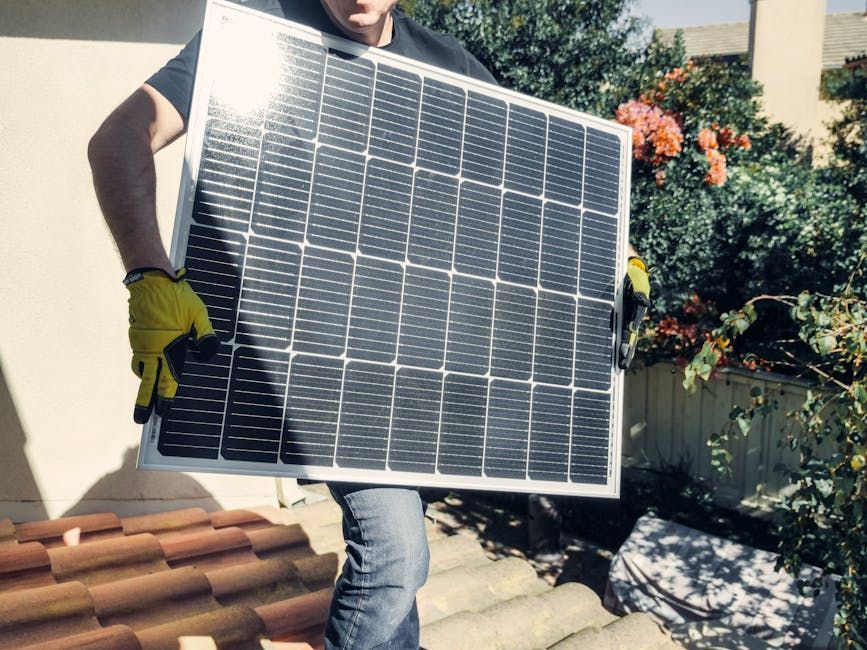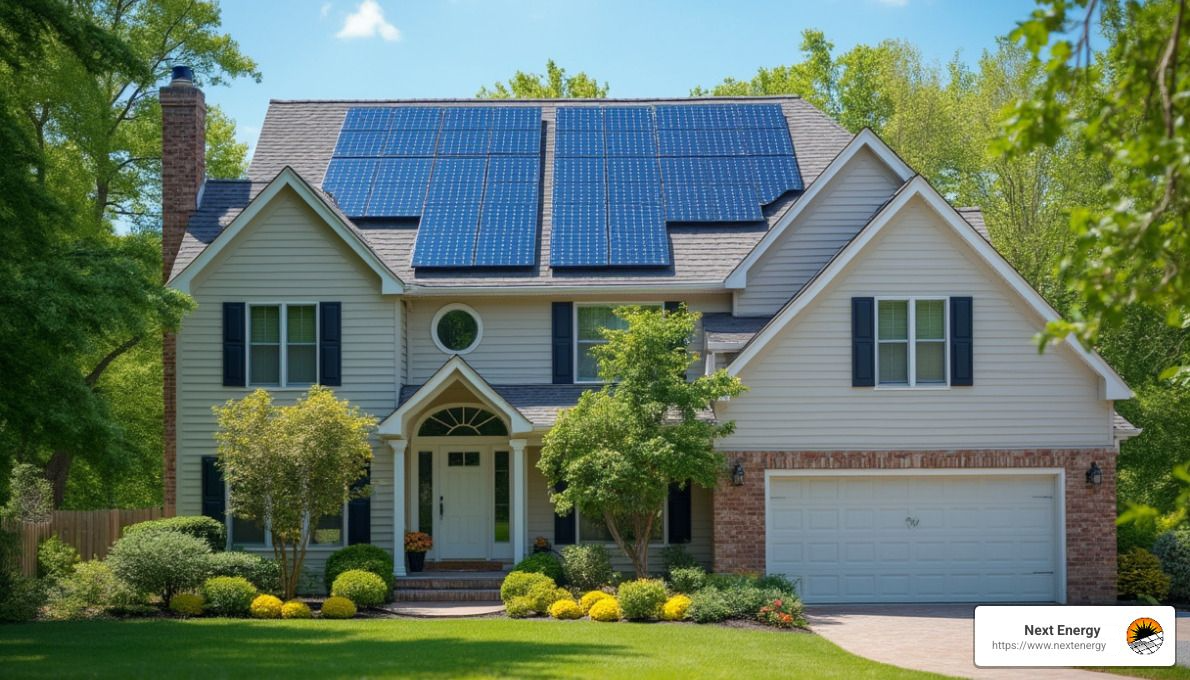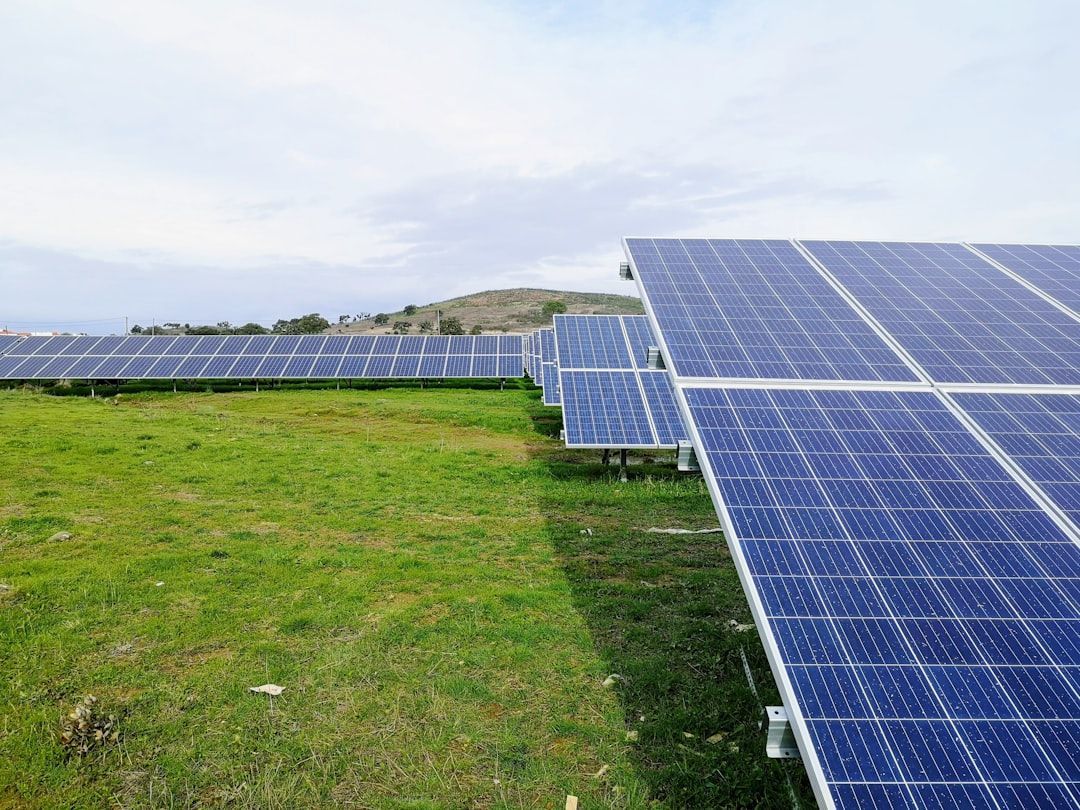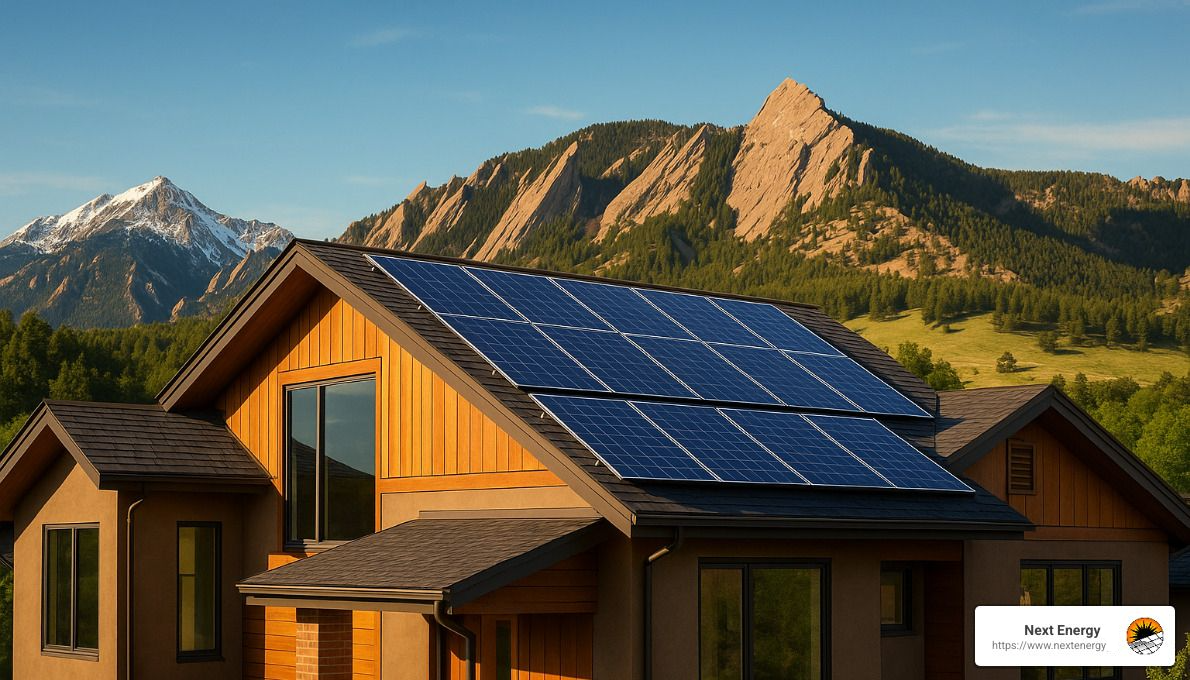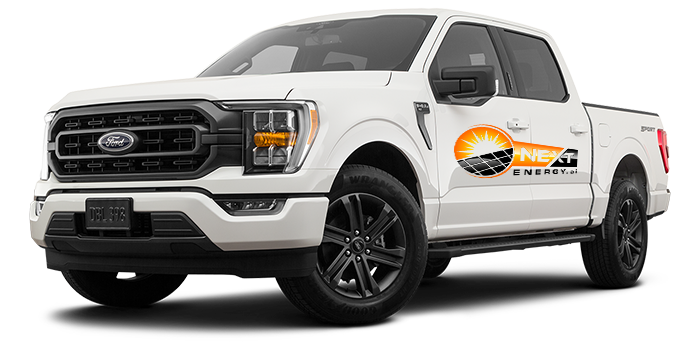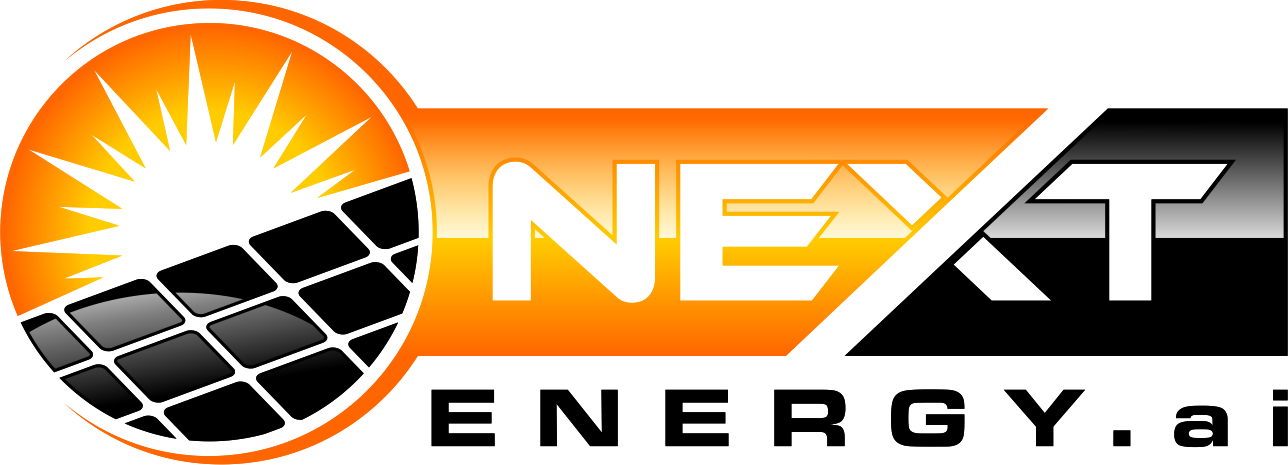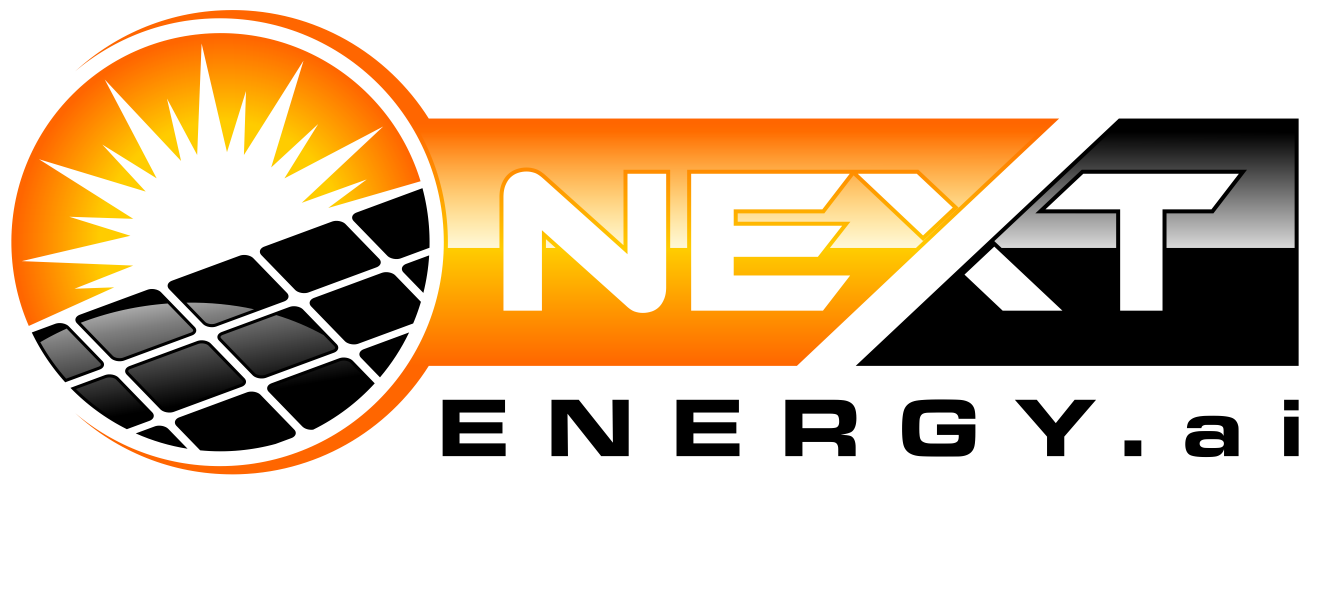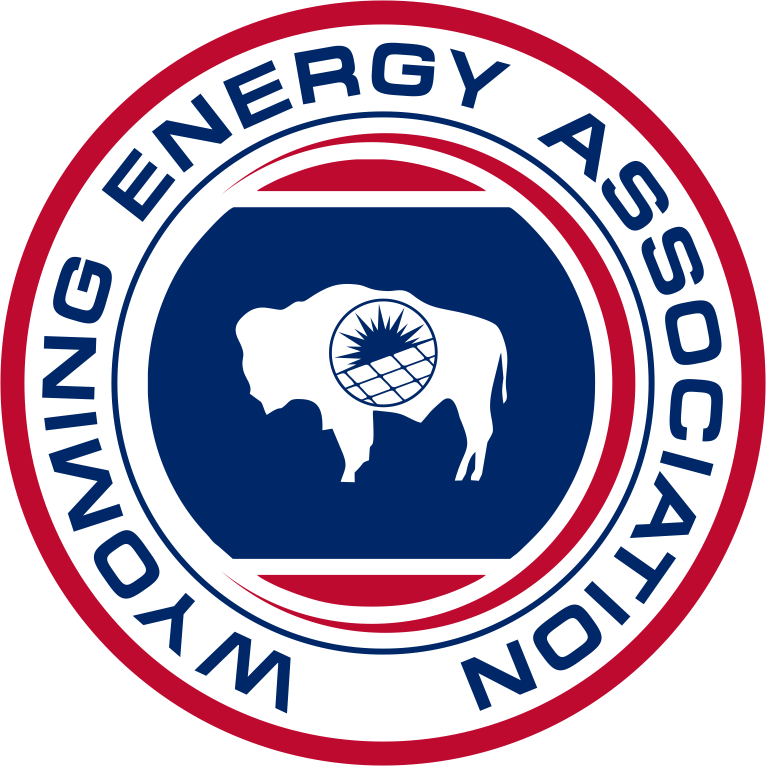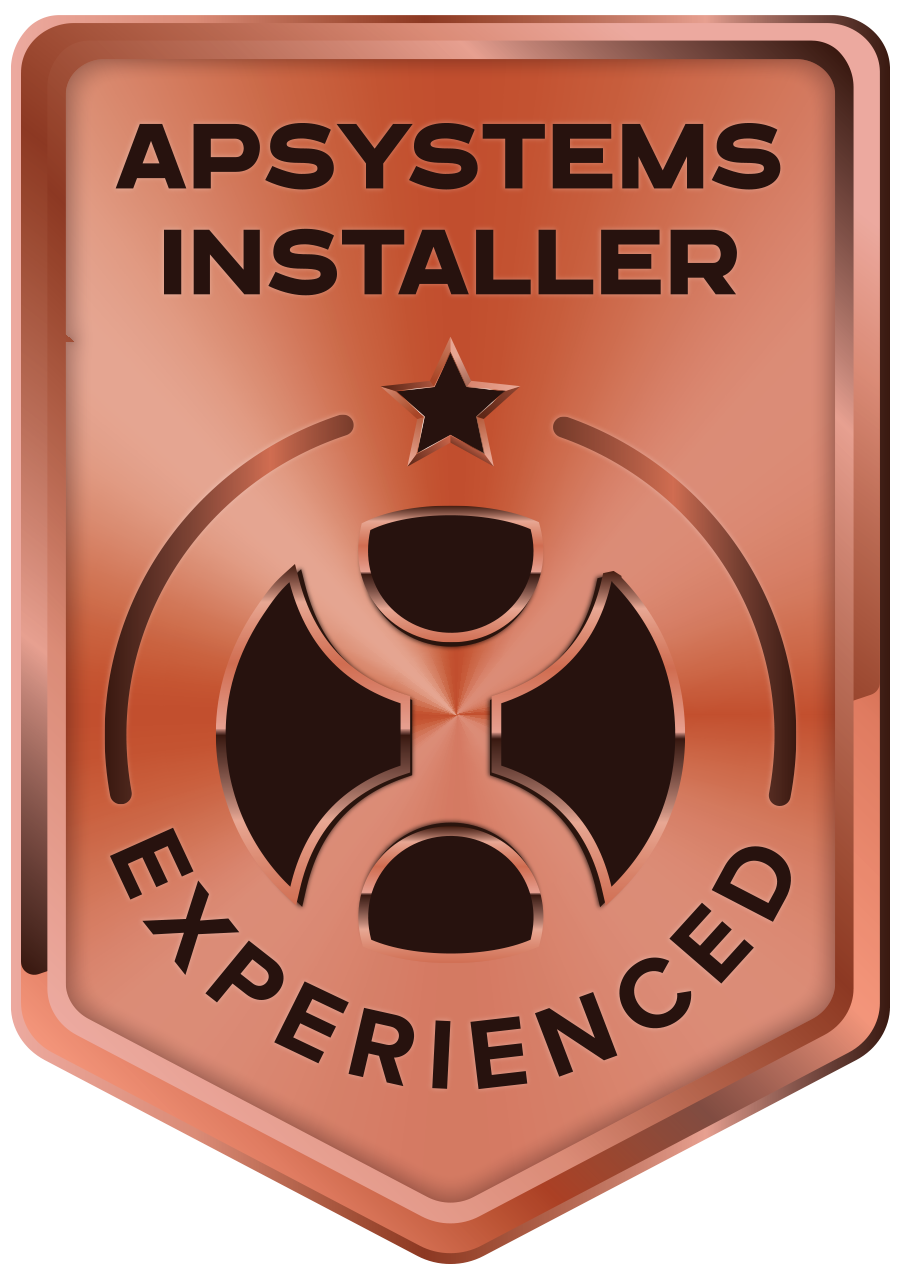Solar Installation Costs: A Comprehensive Guide
Understanding Solar Power Installation Pricing
The average solar power installation price ranges from $2.74 to $3.30 per watt in 2024, with most residential systems costing between $16,500 and $30,000 before incentives. After applying the 30% federal tax credit, homeowners typically pay between $12,600 and $21,000 for a complete system.
System Size: 5 kW
Before Incentives: $13,700-$16,500
After 30% Tax Credit: $9,590-$11,550
System Size: 8 kW
Before Incentives: $21,900-$26,400
After 30% Tax Credit: $15,330-$18,480
System Size: 10 kW
Before Incentives: $27,400-$33,000
After 30% Tax Credit: $19,180-$23,100
Thinking about installing solar panels on your home? You're not alone. One of the first questions most homeowners ask is about the solar power installation price – and for good reason. This upfront investment can seem daunting, but understanding what drives these costs is the first step toward making an informed decision.
The cost of going solar has dropped dramatically over the past decade, making renewable energy more accessible than ever before. While the price tag varies based on factors like system size, location, and equipment quality, most homeowners find that solar panels pay for themselves within 6-10 years through utility bill savings.
What's included in a typical solar installation price? The total cost breaks down into:
- Solar panels (25-30%)
- Inverters (10-15%)
- Mounting hardware and wiring (10-15%)
- Labor and installation (15-25%)
- Permits, inspections, and design (20-35%)
I'm Spencer Gordon, CEO of NextEnergy in Fort Collins, Colorado, with extensive experience helping homeowners steer solar power installation price considerations across Northern Colorado and Wyoming. My background in photovoltaics and renewable energy has shown me that transparency about costs is essential for homeowners making this important investment.
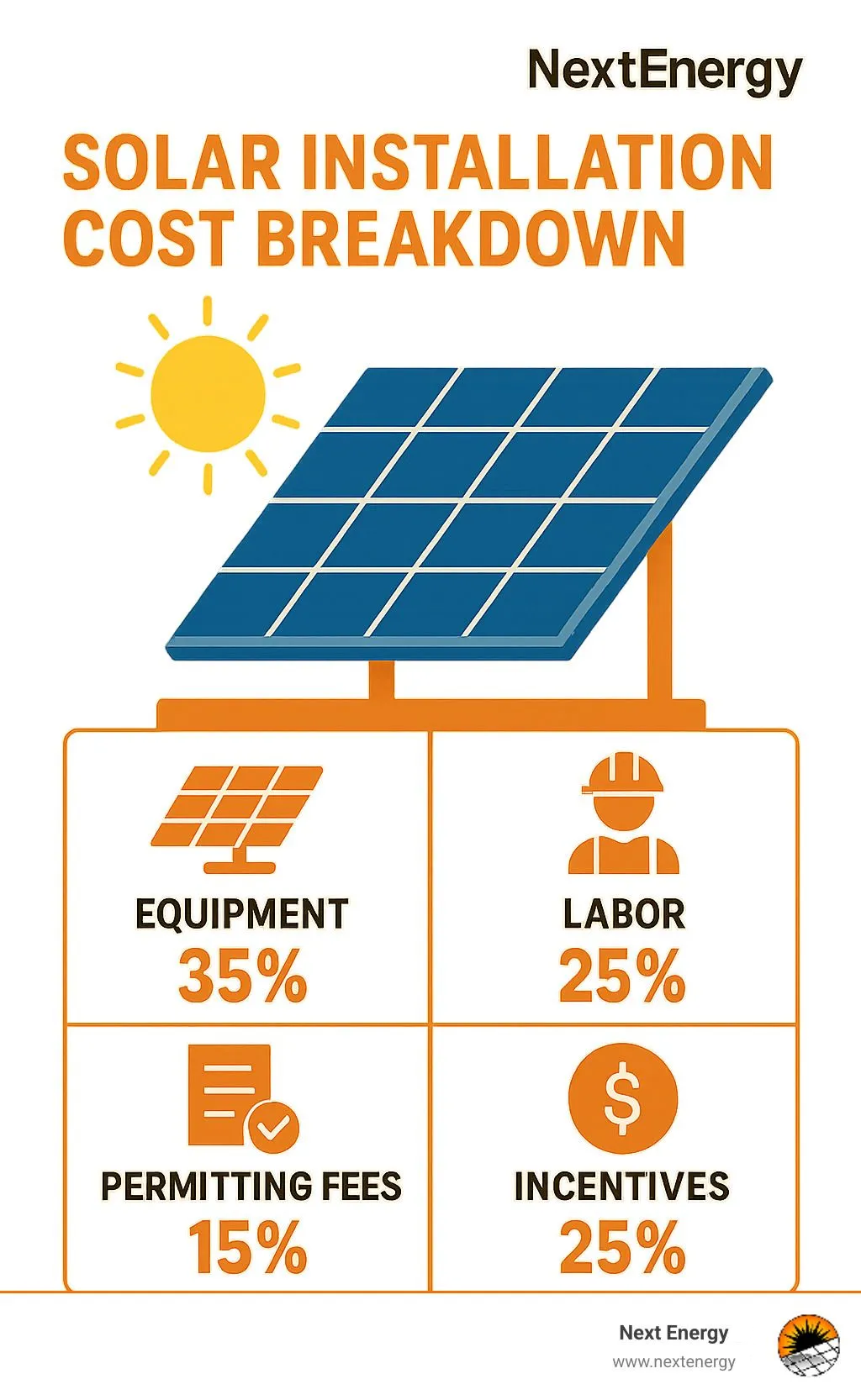
The Average Solar Power Installation Price in 2024
Good news for homeowners considering solar in 2024 – the national average solar power installation price continues to become more affordable! Currently, residential systems range between $2.74 and $3.30 per watt. For a typical home needing an 8-10 kilowatt (kW) system, you're looking at approximately $21,900 to $33,000 before any incentives kick in.
Wood Mackenzie, one of the energy industry's leading research firms, reports that an average 10-kilowatt residential solar system costs about $31,460 before incentives. Apply the 30% federal tax credit, and that drops to a much more manageable $22,022. If you're willing to shop around, you might find even better deals – EnergySage marketplace data shows slightly lower prices, with an average of $2.56 per watt.
It's pretty remarkable how far we've come with solar affordability. As the Solar Energy Industries Association (SEIA) points out, "Solar installation costs have fallen by nearly 60% over the past decade," making clean energy accessible to millions more American homeowners.
Here in our service area of Northern Colorado and Southern Wyoming, we at Next Energy typically see prices aligning closely with these national averages. That said, local factors like labor costs and permitting fees can cause some variation in what you'll actually pay.
Cost-Per-Watt Benchmarks
The Department of Energy (DOE) regularly publishes helpful benchmarks that break down the solar power installation price into its component parts. These reports reveal something interesting: while hardware costs have plummeted over the years, "soft costs" remain stubbornly high.
According to the National Renewable Energy Laboratory (NREL), the actual hardware—panels, inverters, and mounting equipment—now accounts for only about 35% of residential solar installation costs. The remaining 65% consists of soft costs including permitting, inspection, interconnection, customer acquisition, and installer profit margins.
This breakdown explains why those DIY solar kits online look so much cheaper than professional installations. When you see a solar panel advertised for $0.80 to $1.00 per watt, the panel itself represents just a fraction of your total installation cost.
For a typical installation, materials typically account for 43% of total costs, installation labor makes up around 7%, and design, engineering, and overhead account for approximately 28% of the final price. Understanding this breakdown helps set realistic expectations when budgeting for your solar project.
How System Size Changes the Solar Power Installation Price
One of the most significant factors affecting your solar power installation price is simply the size of the system you choose. Solar installations benefit from economies of scale—as system size increases, the cost per watt typically decreases.
I like to call this the "Costco effect" of solar—buying in bulk saves money! This happens because certain fixed costs (permitting, design, travel to your home) are spread across more panels. Installing a 10 kW system doesn't require twice the labor of a 5 kW system, making larger installations more cost-effective on a per-watt basis.
While a larger system means a higher upfront cost, it often provides better long-term value. However, it's crucial to size your system according to your actual energy needs rather than arbitrarily going bigger. At Next Energy, we analyze your past 12 months of electricity usage to recommend the optimal system size for your specific home.
State-by-State Snapshot
The solar power installation price varies significantly depending on where you live. Different states have different labor costs, permitting requirements, available incentives, and even varying amounts of sunlight.
Here in Northern Colorado, our customers typically see costs ranging from $2.70 to $3.20 per watt, which is slightly below the national average. By comparison, California homeowners often pay higher prices ($3.00-$3.45 per watt) due to higher labor costs and more stringent building codes, despite enjoying excellent solar resources.
Interestingly, some states with fewer peak sun hours, like Massachusetts, have higher installation costs (averaging $3.45 per watt) but still offer excellent solar payback periods thanks to high electricity rates and generous state incentives.
Our Colorado prices compare favorably to neighboring states:
- Colorado: $2.70-$3.20 per watt
- Wyoming: $2.65-$3.15 per watt
- Arizona: $2.54-$3.00 per watt
- New Mexico: $2.68-$3.10 per watt
These regional differences highlight why it's so important to get quotes from local installers who understand your area's specific requirements and conditions. At Next Energy, we specialize in the unique solar landscape of Northern Colorado and Southern Wyoming, ensuring our customers receive accurate pricing custom to local conditions.
More info about solar installation in Colorado
Cost Components of a Residential Solar System
Understanding the breakdown of your solar power installation price helps you identify where your money is going and evaluate whether a quote is reasonable. Let's examine each component:
Solar Panels: Mono vs Poly vs Thin-Film
When you look at your solar quote, about 30% of the total cost comes from the panels themselves. The type you choose affects both price and performance in meaningful ways.
Monocrystalline panels are the luxury sedans of the solar world, priced between $0.75 and $1.50 per watt. They're the most efficient option (17-22%) and require less roof space to generate the same amount of power. With their sleek, uniform black appearance, they're often the choice for homeowners who care about aesthetics. These premium panels typically last 25-40 years with minimal degradation.
Polycrystalline panels offer a more budget-friendly alternative at $0.90 to $1.00 per watt. Think of them as the reliable family car – not as flashy, but they get the job done well. They have slightly lower efficiency (15-17%) and a distinctive blue, speckled appearance. Their 25+ year lifespan makes them excellent value for homes with plenty of roof space.
Thin-film panels cost between $0.50 and $1.50 per watt but rarely make sense for homes. With their lower efficiency (10-13%), they need significantly more space than the other options. They generally have shorter lifespans and are better suited for commercial buildings or specialized applications like RVs.
"The efficiency gap between mono and poly panels has narrowed significantly," our lead system designer at Next Energy often tells customers. "For many Colorado homes with good roof space, high-quality polycrystalline panels deliver excellent value without sacrificing too much performance."
Inverters & Balance-of-System
Inverters might only represent 10-15% of your solar power installation price, but they're the unsung heroes of your system. These devices convert the DC electricity your panels generate into the AC electricity your home actually uses.
You have three main options, each with different strengths:
String inverters ($0.25-$0.50/watt) connect multiple panels in a series and are the most economical choice. They work beautifully for installations with consistent sunlight but struggle when some panels are shaded while others aren't.
Microinverters ($0.40-$0.80/watt) attach directly to each individual panel. While more expensive, they allow for panel-level monitoring and better performance in partial shade. In challenging conditions with inconsistent sunlight, they can boost energy production by 5-25%.
Power optimizers with string inverters ($0.30-$0.60/watt) offer a middle-ground solution. They provide panel-level optimization while still using a central inverter for the final conversion.
Beyond panels and inverters, your system needs mounting hardware ($0.25-$0.50/watt), wiring and electrical components ($0.15-$0.30/watt), and monitoring systems ($0.10-$0.25/watt). Together, these balance-of-system components make up another 10-15% of your total cost.
Batteries & Backup Options
Adding energy storage to your solar system is like adding a generator that never runs out of fuel (as long as the sun is shining). It significantly increases your solar power installation price but provides peace of mind during outages and greater energy independence.
Battery prices have dropped about 15% in the last two years, but they're still a substantial investment. Current pricing typically falls into three categories:
Entry-level systems (10 kWh) cost between $8,000 and $12,000 and can power essential loads during an outage.
Mid-range systems (13-15 kWh) run $12,000 to $18,000 and can handle more of your home's needs.
Whole-home backup systems (20+ kWh) cost $18,000 to $30,000 but can keep nearly everything running during extended power losses.
"Many of our Northern Colorado customers are adding batteries not just for backup during winter storms," shares our energy storage specialist. "They're also using them for peak shaving – using stored solar energy during utility peak rate periods to maximize savings, especially with time-of-use billing."
For those looking to go completely off-grid, the investment jumps substantially to $45,000-$65,000, as these systems require more extensive battery capacity and often a backup generator.
Soft Costs & Hidden Fees
Here's something that surprises many homeowners: about 65% of your solar power installation price isn't for physical equipment at all. These "soft costs" are significantly higher in the U.S. than in other countries and include things you might not have considered.
Permitting and inspection fees ($200-$1,200) vary widely depending on where you live. Some Colorado municipalities have streamlined solar permitting, while others require extensive documentation and multiple inspections.
Interconnection costs ($100-$500) are fees your utility charges to connect your system to the grid. Think of it as the paperwork cost of becoming a mini power plant.
Customer acquisition eats up approximately 20% of your total cost. This covers marketing, sales, site visits, and system design – which explains those persistent calls after you request a single quote online!
Installer overhead and profit (15-20%) covers business operations, insurance, warranties, and reasonable profit margins. Solar companies need to stay in business long enough to honor those 25-year warranties.
Design and engineering (5-10%) ensures your installation is safe, code-compliant, and optimized for your specific roof and energy needs.
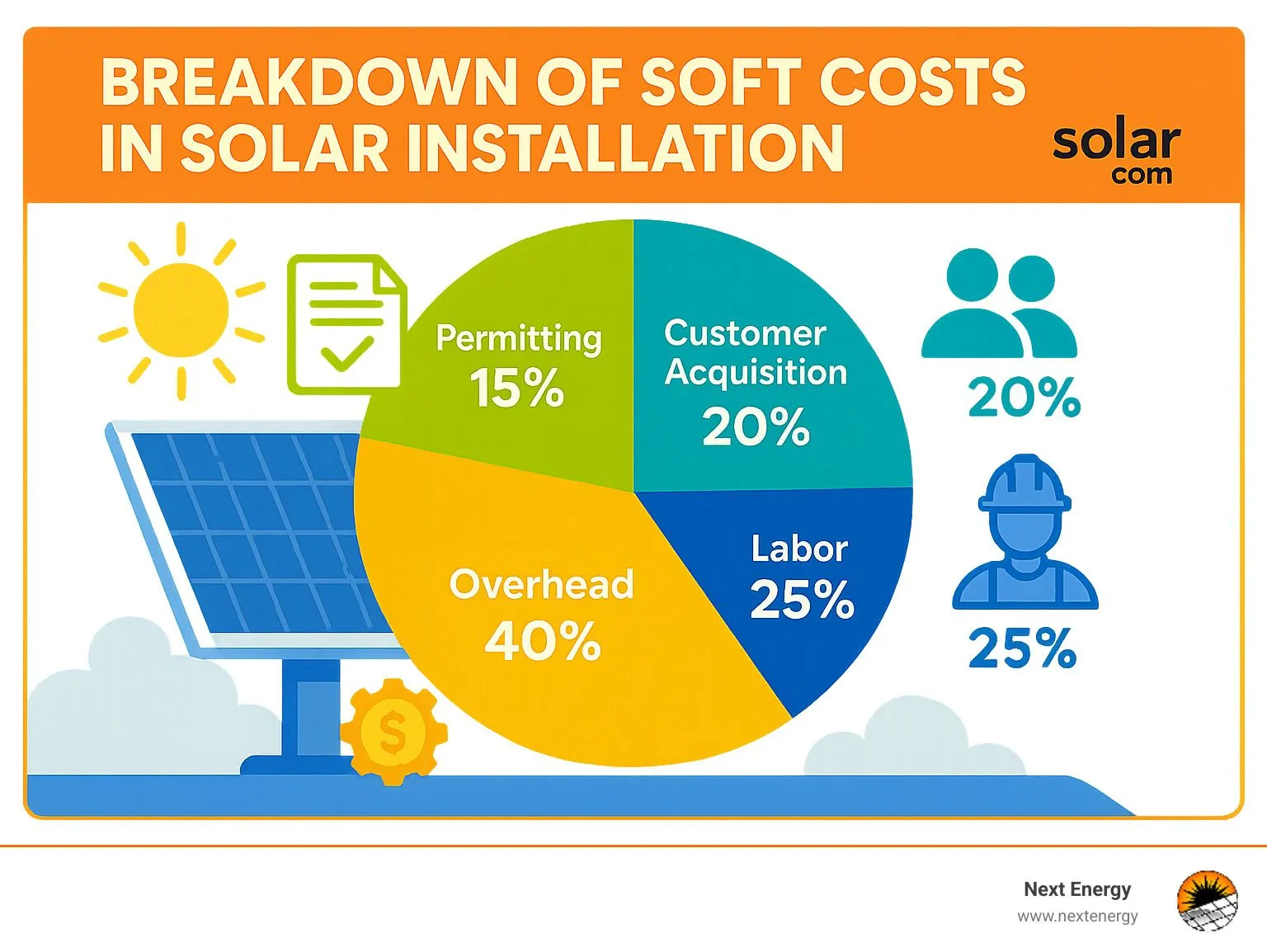
Watch out for costs that might not appear in your initial quote, such as electrical panel upgrades ($1,300-$2,500) if your existing panel can't handle the solar input, roof repairs, tree removal to reduce shading, or extended warranties beyond the standard offering.
At Next Energy, we believe in transparency. Our quotes include all necessary costs upfront, so you won't face surprise expenses down the road. We've seen too many homeowners get caught off guard by "extras" that should have been included from the beginning.
Factors That Influence Your Solar Quote
Beyond the basic components, several factors can significantly impact your solar power installation price. Understanding these variables helps explain why quotes might differ between homes or installers.
Roof Type, Shading & Installation Complexity
Your roof's characteristics play a major role in determining installation costs:
The type of roof you have makes a big difference in how much your installation will cost. Standard asphalt shingle roofs are the easiest to work with, typically adding just $0.30-$0.50 per watt for labor. But if you have a metal roof, that jumps to $0.40-$0.70 per watt. Tile roofs are even trickier, costing $0.60-$0.90 per watt, while flat roofs need specialized mounting systems at $0.50-$0.80 per watt.
The age of your roof matters too. If you have less than 10 years of life left in your shingles, it's usually smarter to replace the roof before adding solar. Otherwise, you'll face a hefty bill of $2,800-$4,800 down the road when you need to remove and reinstall your entire system during a roof replacement.
"We had a customer in Fort Collins last year who decided to replace their 15-year-old roof before installation," I often tell clients. "It added to the upfront cost, but they avoided the headache of dismantling their solar system just three years later when leaks would have inevitably appeared."
Roof complexity is another factor that can drive up your solar power installation price. Those beautiful dormers and skylights that add character to your home? They also add installation time and cost. A simple rectangular roof section allows for efficient panel placement, while complex layouts with multiple angles require more planning and labor hours.
Shade is the enemy of solar production, and addressing it comes at a cost. Those lovely mature trees around your home might mean you need additional equipment like microinverters or power optimizers (adding $0.15-$0.40 per watt) to maintain decent energy production.
"We recently worked with a homeowner in Loveland whose roof had significant afternoon shading from mature pine trees," shares our installation manager. "Rather than recommending tree removal, we designed a system using microinverters and focused panel placement on the unshaded sections, maximizing morning production when the homeowner's energy usage was highest."
Panel Type & Quality Impact on Price
The quality and efficiency of your chosen solar equipment significantly affects the solar power installation price:
Budget panels might seem attractive at $0.70-$0.90 per watt, but premium options from manufacturers like Panasonic, LG, or SunPower ($1.00-$1.50 per watt) offer benefits that can make them worth the investment. These higher-end panels convert more sunlight to electricity (20-22% efficiency versus 17-19% for standard panels), perform better during Colorado's hot summer days, and degrade more slowly over time (losing just 0.3% capacity annually compared to 0.5-0.7% for budget panels).
Each percentage point increase in panel efficiency adds approximately $0.10-$0.15 per watt to the cost. For homes with limited roof space, this premium is often worthwhile as it allows for generating more power in a confined area.
Warranty coverage is another factor that affects price but provides peace of mind. Premium panels typically come with 25-30 year warranties, while budget options might offer just 12-15 years of coverage. The best installations also include solid workmanship warranties covering the actual installation work for 5-25 years.
"Higher-quality panels may cost more upfront but typically last longer and perform better over time," explains our procurement specialist. "For Colorado homes that experience extreme weather conditions—from intense summer sun to heavy winter snow—we often recommend investing in panels with stronger frames, better temperature coefficients, and comprehensive warranties."
Why Location Matters for Solar Power Installation Price
Your geographic location affects your solar power installation price in several ways:
Labor costs vary significantly depending on where you live. Here in Northern Colorado, our rates are generally moderate compared to places like California or Massachusetts, where higher costs of living drive up installation prices.
Climate considerations matter too. In our service area of Northern Colorado and Wyoming, systems must be designed to withstand heavy snow loads (requiring stronger mounting hardware), frequent hail (potentially necessitating more durable panels), and high winds (needing additional roof attachments). These requirements can add to your system cost but ensure your investment stands up to our challenging weather conditions.
Your local utility's policies regarding solar connections dramatically impact your system's value. Some utilities offer full retail credit for excess generation through net metering, while others provide only wholesale rates through net billing arrangements. Here in Colorado, most utilities still offer some form of net metering, but the details vary significantly between providers.
The permitting process can also affect your timeline and costs. Some jurisdictions have acceptd solar with streamlined, solar-friendly permitting processes, while others require extensive documentation, multiple inspections, and higher fees. Colorado has been working to standardize solar permitting across municipalities, but requirements still vary by location.
Local incentives can substantially reduce your costs. While everyone gets the federal 30% tax credit, state and local incentives vary dramatically. In Colorado, we benefit from property tax exemptions for solar installations and some utility rebate programs, but these programs change frequently.
At Next Energy, our familiarity with Northern Colorado and Southern Wyoming's specific requirements, climate conditions, and utility policies allows us to design systems optimized for local conditions, potentially saving you thousands over the system's lifetime.
More info about rooftop solar system installation costs, benefits, and process
Incentives, Financing & Long-Term Savings
Let's face it - when you first see that solar power installation price, you might experience a bit of sticker shock. But don't worry! The actual cost you'll pay is often dramatically lower than that initial quote, thanks to a variety of incentives and financing options that make solar surprisingly affordable.
Federal & State Incentives
The federal government really wants you to go solar - so much so that they're willing to pay for nearly a third of your system! The Residential Clean Energy Credit gives you a whopping 30% tax credit on your entire solar installation through 2032.
What does this look like in real dollars? If your system costs $25,000, you'll get $7,500 back as a tax credit, bringing your actual cost down to $17,500. And don't worry if your tax bill isn't that high in a single year - you can carry this credit forward to future tax years until you use it all up.
But wait, there's more! Depending on where you live, you can stack additional savings on top of this federal credit.
Here in Colorado, our customers benefit from:
- Property tax exemptions (so your home value goes up, but your property taxes don't)
- Sales tax exemptions in many cities and towns
- Special rebates from utilities like Xcel Energy and Fort Collins Utilities
- Performance incentives that pay you for the clean energy you produce
Our Wyoming customers have fewer incentives, but still benefit from:
- Net metering programs that credit you for excess electricity
- Some utility-specific rebate programs depending on your provider
"One of our Loveland customers combined the federal tax credit with local rebates and ended up paying less than 60% of the initial quote," says our incentives specialist. "They were shocked at how affordable their system became after all the incentives were applied."
For the most up-to-date information on available incentives in your specific location, check the Database of State Incentives for Renewables & Efficiency or give us a call for a personalized assessment.
Financing Options & Their Effect on Solar Power Installation Price
Very few people pay cash for their solar systems - and you don't need to either! There are several ways to finance your solar installation, each with its own advantages:
Cash purchase is like buying a 25-year electricity plan upfront. You'll pay the most initially, but over the long term, you'll save the most money since you're not paying any interest or fees. Most of our cash customers see their investment paid back in 6-10 years, with free electricity for decades after that.
Solar loans give you the best of both worlds - you own the system and get all the incentives, but you can pay over time with little or nothing down. Many of our customers find that their monthly loan payment is actually less than what they were paying the utility company! The trade-off is that you'll pay some interest, typically adding 10-30% to the lifetime cost.
"We partnered with local credit unions to offer our customers solar loans as low as 4.5% right now," explains our financing coordinator. "At rates like that, going solar becomes a no-brainer for most homeowners in Northern Colorado."
Solar leases and PPAs (Power Purchase Agreements) let you go solar with zero money down. The solar company owns the equipment on your roof, and you just pay for the power it produces - usually at a rate lower than your utility charges. While this is the easiest option, it's typically 15-40% more expensive over the long run, and the contracts can complicate things if you sell your home.
For most of our customers in Northern Colorado and Wyoming, a solar loan offers the sweet spot of affordability and savings. But everyone's situation is different, and we're happy to walk you through which option makes the most sense for your specific circumstances.
Payback Period, Bill Savings & Home Value Boost
The magic of solar isn't just about saving the planet - it's about saving serious money over time. When you're considering the solar power installation price, you need to look at the complete financial picture:
Your monthly savings start immediately. Most of our customers see their electric bills drop by 70-100%, saving between $1,000 and $1,800 every year. And as utility rates continue to climb (they've risen about 3.5% annually in Colorado over the past decade), your savings actually increase year after year.
Your payback period is simply how long it takes for these savings to equal your initial investment. For most of our Northern Colorado customers, systems pay for themselves in 7-12 years. After that, you're essentially getting free electricity for the remaining life of your system - typically another 15-25 years!
Your home value increases significantly with solar. Studies by Zillow and the Department of Energy have found that homes with solar panels sell for about 4% more than comparable homes without solar. On a $500,000 home, that's a $20,000 premium - often covering most of your net system cost right there.
I love sharing success stories like Janet and Mike from Fort Collins, who installed an 8.4 kW system in 2020. "Our electric bill went from averaging $165 monthly to just $14 for the grid connection fee," Janet told me recently. "With the money we're saving, plus the federal tax credit, our system will pay for itself in just 8 years. After that, it's like getting a $2,000 tax-free bonus every year!"
When you add up the savings over 25 years, most homeowners in our region save between $31,000 and $120,000 on electricity costs. That's not just a good investment - it's one of the best financial decisions you can make for your home.
At Next Energy, we'll help you steer all these incentives and financing options to find the most affordable path to solar for your specific situation. The solar power installation price you end up paying might be much lower than you think!
Step-By-Step Guide: From Quote to Switch-On
Ever wonder what happens between saying "yes" to solar and finally flipping that switch? Understanding this journey helps explain why the solar power installation price includes more than just panels and labor. Let's walk through what you can expect when you decide to go solar.
Site Assessment & Quote Accuracy
The foundation of a successful solar project starts with a thorough assessment of your property. This crucial step ensures you receive an accurate quote rather than a surprise bill later.
First, we conduct a preliminary assessment using satellite imagery and your electricity bills to create a rough estimate of what might work for your home. Think of this as the "first date" with solar – we're getting to know the basics about your property.
Next comes the on-site evaluation, where one of our solar professionals visits your home. During this visit, we'll check your roof's condition and age, measure dimensions, identify any obstacles like vents or skylights, assess shading patterns throughout the day, and inspect your electrical panel. We'll also take time to understand your energy goals – are you trying to eliminate your bill completely, or just reduce it? Do you want battery backup for power outages?
"I remember visiting a home in Fort Collins where the satellite images showed a perfect south-facing roof," shares our lead assessor. "But when I arrived, I finded three beautiful 80-foot pines that had grown substantially since those images were taken. Without that in-person visit, we would have dramatically overestimated production potential."
Based on this thorough assessment, we create a custom system design that maximizes energy production while working within your aesthetic preferences and budget. The detailed quote you receive includes the complete system specifications, total solar power installation price with itemized costs, available incentives, and projected savings.
At Next Energy, we use advanced AI-powered modeling tools to analyze your roof's solar potential with remarkable precision. This technology helps us ensure our quotes are accurate and our system designs are truly optimized for your specific situation.
Permitting, Inspection & Interconnection Timeline
Here's where patience becomes a virtue. The paperwork process typically takes longer than the actual installation:
Once you sign the contract and provide a deposit (usually 10-25% of the system cost), we begin the permitting phase. This can take anywhere from 2-8 weeks and includes securing building and electrical permits, obtaining HOA approval if needed, and submitting interconnection applications to your utility company.
After permits are approved, we order your equipment. Depending on manufacturer lead times and current market conditions, this typically takes 2-4 weeks. We only order equipment after permits are approved to avoid storage costs if there are unexpected delays.
The actual installation is surprisingly quick – usually just 1-3 days for most residential systems. Our crews install mounting hardware, place panels, run electrical wiring, install inverters, and set up any battery systems you've chosen.
The post-installation inspection process can take 1-4 weeks as we coordinate city/county building inspections, electrical inspections, and utility inspections. Finally, we await Permission to Operate (PTO) from your utility company, which typically takes another 1-4 weeks.
"The entire process usually takes 2-6 months from signing to operation," explains our project manager. "Most of that time is spent waiting for paperwork approvals, not actual installation work. In Colorado, we're seeing this timeline improve as more jurisdictions adopt the Department of Energy's SolarAPP+ automated permitting system."
Installation Day & Ongoing Care
Installation day is when the exciting change happens. Our crews arrive early to set up safety equipment, stage materials, and briefly shut down your electricity.
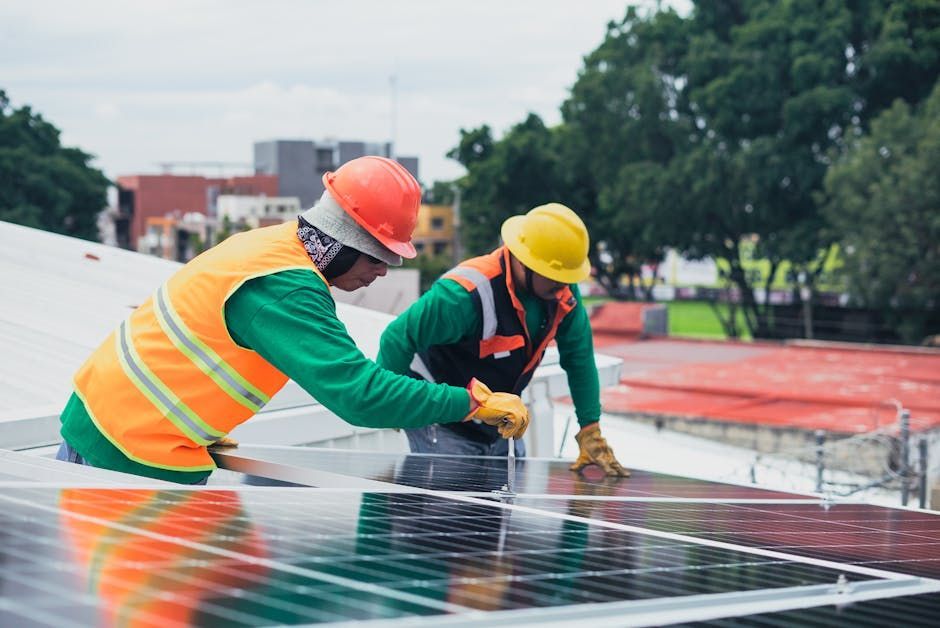
The process begins with installing the mounting system – locating roof rafters, securing mounting brackets, and carefully weatherproofing all roof penetrations. Next comes panel placement, where we secure panels to the mounting rails and connect all the wiring. The electrical connections follow, including inverter installation, connection to your electrical panel, and safety disconnect installation.
Before we leave, we set up your monitoring system, connecting it to your home internet and showing you how to track your production through a convenient app or online portal.
"The most rewarding moment is when we show homeowners their monitoring app for the first time," says our installation team leader. "Seeing their eyes light up as they watch sunshine turn into electricity in real-time never gets old."
Once your system is up and running, it requires surprisingly little maintenance. Occasional cleaning with water can improve output by 3-5%, though in Colorado, natural rainfall and snow melt often keep panels relatively clean. Regular checks of your production data through the monitoring system can identify potential issues before they affect performance.
While solar panels typically last 25+ years, string inverters may need replacement after 10-15 years (microinverters generally last the full 25+ years). Many of our customers opt for an annual professional inspection to ensure optimal performance, though this isn't strictly necessary.
"We recently helped a customer in Windsor whose system was underperforming," shares our service technician. "Our monitoring system flagged the issue, and we finded that a nearby tree had grown significantly in the three years since installation, creating afternoon shading. A simple tree trimming restored full production capacity."
The journey from quote to switch-on may take some time, but the decades of clean, affordable energy that follow make it well worth the wait. At Next Energy, we're with you every step of the way, ensuring your transition to solar is as smooth and stress-free as possible.
Frequently Asked Questions About Solar Power Installation Price
What drives the solar power installation price higher than expected?
You've done your research, gotten a ballpark estimate online, and feel ready to go solar. Then the actual quote comes in higher than you expected. What happened?
Several common factors can push your solar power installation price beyond initial estimates. Electrical upgrades are often the culprit – if your home's electrical panel is outdated or already at capacity, you might need an upgrade costing between $1,300 and $2,500 before adding solar.
Roof complications can also drive up costs. During our detailed inspections, we sometimes find structural issues, multiple layers of old roofing, or unusual roofing materials that require specialized mounting solutions or extra labor.
For ground-mounted systems or when your array needs to be far from your electrical panel, trenching requirements can add $10-$30 per linear foot to run conduit underground. This seemingly small detail can add up quickly on larger properties.
Permit or inspection delays, while outside everyone's control, can increase project carrying costs for installers, sometimes resulting in higher prices. And homes with steep roofs, unusual layouts, or difficult access may require specialized equipment or additional safety measures.
"We always conduct a thorough site assessment to identify these potential issues upfront," notes our operations manager. "We'd rather provide a comprehensive quote initially than surprise customers with additional costs later."
How can I lower my solar power installation price without sacrificing quality?
Getting the best value on your solar investment doesn't mean cutting corners on quality. Start by getting multiple quotes – we always encourage homeowners to compare proposals from at least three reputable installers. This healthy competition often results in better pricing and helps you spot outliers.
Focus on right-sizing your system to your actual needs rather than simply maximizing roof coverage. An oversized system increases costs without proportional benefits. At Next Energy, we analyze your actual usage patterns to recommend the optimal system size.
Consider the efficiency tradeoffs when selecting panels. Unless roof space is extremely limited, standard-efficiency panels (around 18-19%) often provide better value than premium high-efficiency options that cost significantly more per watt.
Timing your purchase strategically can yield savings too. The solar industry often has seasonal pricing fluctuations, with better deals typically available during fall and winter months when installation demand naturally drops.
If you need a new roof or electrical panel upgrade anyway, bundling these projects with your solar installation can reduce overall costs through shared labor and permitting efficiencies.
Finally, be thorough about maximizing incentives. Beyond the federal tax credit, look into utility rebates, state incentives, and special financing programs available in your area.
"We worked with a family in Greeley who initially wanted a 12 kW system to cover 100% of their usage," recalls our sales consultant. "After analyzing their consumption patterns, we identified that a 9.6 kW system would offset 85% of their usage at a much lower cost. The smaller system had a payback period of 7 years versus 9.5 years for the larger option."
Is the solar power installation price worth it in low-sunlight states?
Living somewhere that isn't as sunny as Colorado doesn't mean solar isn't viable – it just changes the calculation. In fact, solar can be economically sound even in regions with fewer sunny days.
Surprisingly, electricity rates matter more than sunshine when determining solar payback periods. States with high electricity prices often provide faster solar payback even with less sunlight. That's why New England states, despite having significantly fewer sun hours than Colorado, still have excellent solar economics.
Net metering policies play a crucial role too. Strong programs that credit excess production at retail rates significantly improve the economics in less sunny regions by essentially letting you use the grid as a battery.
System design becomes even more critical in areas with less direct sunlight. Optimal panel orientation, precise tilt angles, and careful equipment selection can significantly impact production in cloudier climates.
Many states with less ideal solar conditions offer additional incentives specifically to improve the financial equation. These extra incentives often compensate for the reduced sunlight.
Here in Northern Colorado, we enjoy approximately 300 sunny days per year, making solar particularly effective. However, even in cloudier parts of Wyoming, the combination of net metering and the federal tax credit often results in attractive payback periods of 8-12 years.
"One of our customers in Laramie, Wyoming, was concerned about the snowy winters affecting their solar production," shares our system designer. "We designed their system with a steeper tilt angle to help shed snow and focused on maximizing summer production. Three years in, they're on track to achieve their projected 9-year payback period despite the seasonal variations."
Conclusion & Next Steps
Let's face it - the solar power installation price is a big investment. But it's one that pays you back in so many ways. Beyond just saving money on your electric bills and boosting your home's value, solar gives you something priceless: energy independence. There's something deeply satisfying about producing your own clean power right on your rooftop.
Here at Next Energy, we're doing things differently for homeowners across Northern Colorado and Wyoming. We've taken traditional solar and made it smarter by integrating advanced AI technology that optimizes your system in real-time. This intelligent approach typically increases savings by an additional 15-20% compared to standard solar installations – that's money staying in your pocket every month.
Being based in Loveland, we understand what makes solar work in our region. The intense Colorado sun, our seasonal weather patterns, local building codes, and utility policies – these aren't just theoretical concepts to us. They're the practical realities we steer every day from Fort Collins to Cheyenne and Boulder to Laramie.
Ready to see if solar makes sense for your home? The path forward is simple:
First, reach out for a free solar assessment. We'll analyze your roof using satellite imagery and AI tools, then combine this with your energy usage patterns to create a custom solar profile just for you.
Next, we'll walk you through a detailed proposal that breaks down exactly what you'll get, what it costs, which incentives apply to your situation, and most importantly – what you'll save over time.
Financing solar is flexible. Whether you prefer to purchase outright for maximum long-term savings, finance with a solar loan that often costs less than your current electric bill, or explore lease options with zero down payment – we'll help you find the approach that fits your financial goals.
When it's time to install, our experienced team handles everything from permits to utility paperwork. We keep you informed without burdening you with the technical details (unless you're interested – we love solar nerds!).
Once your system is up and running, you can sit back and enjoy decades of clean, affordable energy. Most of our systems are producing strong after 25+ years, making solar one of the longest-lasting home improvements you can make.
With solar costs continuing to drop while equipment quality improves, 2024 is proving to be an excellent time to consider powering your home with sunshine. The 30% federal tax credit remains at its peak, and energy prices continue their upward march – improving the solar value proposition month after month.
Why not find out what solar could do for your home? It costs nothing to explore your options, and you might be surprised at how affordable and practical solar has become for Northern Colorado homeowners.
